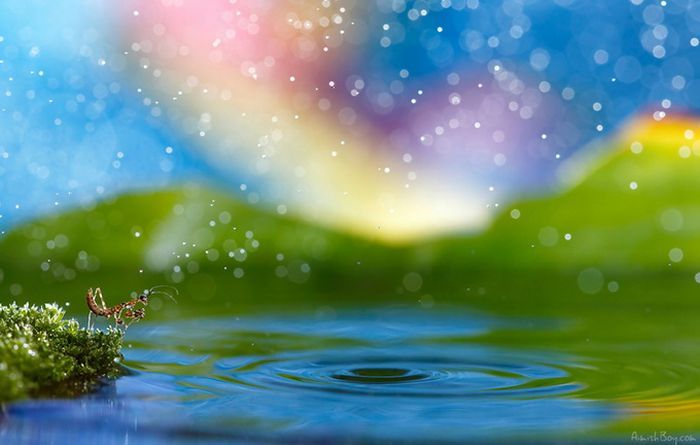|
|
Animal Macro Photography
|
• Attaching a telephoto extender between the camera body and the lens. A 1.4× or 2× teleconverter gives a larger image, adding macro capabilities. As with an extension tube, less light will reach the film or sensor, and a longer exposure time will be needed. However, working distance remains the same as without the teleconverter.
• Reversing the lens using a "reversing ring". This special adapter attaches to the filter thread on the front of a lens and makes it possible to attach the lens in reverse. Excellent quality results up to 4x lifesize magnification using fairly cheap, "standard" (not specially designed for macro) lenses can be produced. For cameras with all-electronic communications between the lens and the camera body, such as Canon EOS, reversing rings are available which allow all camera functions, including open aperture metering, to be used. When used with extension tubes or bellows a relatively cheap but highly versatile macro system can be assembled. This is done not to improve the magnification but to improve image quality; since standard lenses are optimized to focus the light from a distant subject onto a nearby film plane, reversing the lens in the circumstance where the object is closer than the film plane will improve image fidelity.
• Reversing a lens of lesser focal length in front of a normally mounted lens using an inexpensive macro coupler, which screws into the filter threads on the front of the two lenses to join them mechanically. This method allows most cameras to maintain the full function of electronic communication with the normally mounted lens for features such as open-aperture metering. Magnification ratio is calculated by dividing the focal length of the normally mounted lens by the focal length of the reversed lens (e.g., when an 18 mm lens is reverse mounted on a 300 mm lens the magnification ratio is 16:1). The use of automatic focus is not advisable if the first lens is not of the internal-focusing type, as the extra weight of the reverse-mounted lens could damage the autofocus mechanism. Working distance is significantly less than the original lens. This amounts to using a lens normally used as a main photographic objective as an auxiliary lens.
• Close up lens filters: a close up filter is the simplest, cheapest way to go to be able to focus closer to your subject. It’s a special filter that screws in to the end of your regular (non-macro) lens. Close up filters have ranging powers allowing you to get in close to varying extents. A number 4 filter allows you to get in closer than a number 2 filter does. A number 2 filter allows you to get in closer than a number 1 filter. So the higher the number, the more power a filter has to getting you closer to your subject while still maintaining focus. You can also screw multiple close up lens filters to get you even closer to your subject. So if you screw a number 4 and a number 2 close up filters, you’ll end up with a number 6 filter that would allow you to move in even closer. There is one thing you need to keep in mind though. In macro photography the closer you go in, the shallower your depth of field is going to be. So you might not want to go in too close, otherwise you wouldn’t be able to capture a sharp well focused photo of your subject.
|
|









